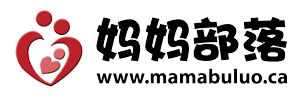Notifications
Clear all
Topic starter
14/10/2025 11:27 下午
As a Chinese-Canadian mom living in Canada, I watched my kid chat fluently with classmates in English, yet struggle to answer even "analyzing the main idea of a passage" in school ELA exams. That’s when I realized "everyday speaking" and "systematic ELA skills" are totally different. After 3 months of trying out both Akaso and Wukong ELA with my kid, I’m breaking down the differences with clear sections to help other anxious parents avoid pitfalls.
1. Curriculum System: "Fragmented Speaking" vs. "Systematic ELA Skill Development"?
1.1 Akaso: Focuses on Basic Speaking, Lacks Core ELA Skills
Akaso’s core offering is "low-cost speaking practice," centered on daily conversation scenarios like greetings, shopping, and weather. During the trial class, the foreign teacher chatted with my kid about "favorite foods" – my kid could say "I like hamburgers," but the class never mentioned "how to describe food textures in English" or "how to write a short paragraph about food."
Its curriculum is scattered, with no connection between levels around "reading, writing, and critical thinking." One class practiced "animal vocabulary," and the next suddenly jumped to "holiday conversations." After learning, my kid only knew isolated sentences, couldn’t connect them into paragraphs, let alone analyze passages or write essays. Post-class exercises were mostly "word dictation" and "sentence translation," which did nothing to help with "text analysis" or "essay structure building" – far from meeting the ELA requirements of overseas schools.
1.2 Wukong ELA: Aligns with International Standards, Covers Reading, Writing & Critical Thinking
Wukong ELA’s curriculum blew me away! It strictly aligns with the U.S. CCSS and European CEFR standards, breaking ELA skills into four modules: "Reading Comprehension, Creative Writing, Grammar & Rhetoric, and Critical Thinking." Each module progresses in stages, perfectly matching the ELA learning needs of overseas kids.
Before the trial, my kid took a Lexile level test, and based on the results, we were recommended the "E3 Reading & Writing Enhancement Class" – the difficulty was just right for my kid’s level. For example, when learning the "nature theme," the teacher didn’t just teach vocabulary: first, they guided the class through an excerpt from *Forest Newspaper*, analyzing "how the author uses onomatopoeia to describe rain"; then, they helped the kids write "My Rainy Day Experience," building a framework around "signs before rain, scenes during rain, and feelings after rain." They even taught the kids to use onomatopoeia like "哗啦啦 (hua la la – rustling)" and "滴答答 (di da da – dripping)" to enrich the writing. Now, my kid’s essays are not only logically organized but also full of details – growth Akaso could never provide.
2. Teaching Model: "One-Way Repetition" vs. "Immersive Interactive Guidance"?
2.1 Akaso: One-on-One Repetition, Superficial Interaction
Akaso’s "one-on-one foreign teacher" model seems flexible, but the interaction is shallow. Most of the time, the teacher said a sentence, and my kid repeated it – e.g., the teacher said "Today is sunny," and my kid repeated it without thinking about sentence structure or context. Once, the teacher asked my kid to "describe a weekend day," but when my kid couldn’t elaborate, the teacher just gave a template like "I ate bread this morning" and had my kid read it, failing to inspire my kid’s expression.
The class duration is fixed at 25 minutes. After greetings and warm-ups, the effective learning time was less than 20 minutes – my kid just got into the zone when the class ended. When I wanted my kid to practice more writing, the teacher said "we mainly focus on speaking," and we would have to pay extra for a separate writing course, making it very low-value for money. Moreover, most course content was pre-recorded PPTs, and different teachers repeated the same material – my kid got bored quickly.
2.2 Wukong ELA: Small-Group Interaction + Inquiry-Based Learning, Encourages Active Thinking
Wukong ELA’s 4-6 student small classes are perfect: they ensure the teacher can pay attention to each kid while allowing interaction and idea-sharing among peers. Classes use interactive tools like "raise hand to speak," "answer boards," and "group debates." For example, when learning the "environmental protection theme," the teacher had the kids debate in groups "whether plastic bags should be banned." The kids had to share opinions based on life experiences and refute the other group’s views – improving both speaking and critical thinking skills at the same time.
Its "inquiry-based teaching" is even more impressive! When learning fables, the teacher didn’t directly explain the moral; instead, they let the kids summarize it through "analyzing character dialogues" and "predicting plot." Last time we learned *The Tortoise and the Hare*, my kid volunteered, "The hare lost because he was arrogant, not because he was slow," and even connected it to life: "I shouldn’t be lazy like the hare when doing homework." This depth of thinking was far beyond what my kid showed in Akaso.
3. Teacher Quality: "Speaking Tutors" vs. "Professional ELA Teachers"?
3.1 Akaso: Low Teacher Threshold, Inadequate Professionalism
Most of Akaso’s teachers are from the Philippines. While they hold basic English teaching certificates, they lack specialized ELA teaching experience. Many could only teach simple conversations, not guide kids in text analysis or writing. Once, my kid asked, "Why did the main character in the story do that?" The teacher just said, "Because that’s the story setting," without exploring the underlying logic. When my kid wrote sentences, the teacher only corrected grammar mistakes, not teaching "how to make sentences more vivid."
Worse, teacher turnover was extremely high – my kid had 5 different teachers in 3 months. Each teacher had a different accent and teaching style, so my kid had to adapt constantly, and there was no continuity in learning. Once, a new teacher had a heavy accent, pronouncing "three" as "tree," and my kid learned the wrong pronunciation – it took a lot of time to correct it later.
3.2 Wukong ELA: Elite Teacher Team, Rich ELA Teaching Experience
Wukong ELA’s teacher selection is extremely strict! 85% of teachers have a master’s degree or higher, 100% hold K-12 ELA teaching qualifications, with an average of 8 years of teaching experience. Most have taught in North American public schools or international schools. My kid’s teacher, Olivia, has a master’s degree in Children’s Literature from the University of Edinburgh and taught ELA at a Canadian international school for 12 years – she truly understands the learning pain points of overseas kids.
For example, when teaching "grammar clauses," Teacher Olivia used "building blocks" to compare the structure of "main clauses + subordinate clauses," making it intuitive for kids to understand. When revising essays, she not only noted, "You can add setting descriptions here" but also gave examples: "For instance, adding ‘The sunset dyed the sky orange’ will make the scene more vivid." With guidance from such a professional teacher, my kid’s ELA skills improved rapidly.
4. Learning Outcomes: "Able to Speak Simple Sentences" vs. "Able to Read, Write & Think Critically"?
4.1 Akaso: Basic Speaking Improvement, No Progress in Core ELA Skills
After 4 months at Akaso, my kid could say simple sentences like "I went to the library today," but there was no progress in core ELA skills. When my kid read The Little Mouse’s Story (Lexile 300L), they could only recognize words but couldn’t explain "why the little mouse went on an adventure." When asked to write "My Pet," my kid only wrote "I have a cat, it’s cute" – no details at all, no different from before taking the course.
Post-class feedback was also perfunctory, with only vague comments like "The kid performed well" or "Actively participated." When I asked the teacher about my kid’s writing problems, they just said "Practice more" without specific improvement methods. My kid became more and more unconfident, and eventually didn’t want to attend class anymore.
4.2 Wukong ELA: Comprehensive Improvement in Reading, Writing & Critical Thinking, Strong Learning Interest
Wukong ELA’s learning outcomes surprised me! After 3 months, my kid could independently read an excerpt from The Insects (Lexile 450L) and analyze "how the author uses detailed descriptions to show ants’ diligence." Their essays progressed from "2 sentences" to "4 paragraphs" – they could use "first, then, finally" to organize ideas and add detailed descriptions like "My dog wagged its tail and put its paw on my hand."
Even more难得, my kid’s critical thinking improved! Last time we read *The Emperor’s New Clothes*, my kid said voluntarily, "The ministers didn’t tell the truth because they were afraid of being mocked, not because they really saw the clothes," and even connected it to life: "We should be brave enough to tell the truth." The detailed progress report from the teaching assistant after each class was also helpful – it noted, "Strength: Detailed descriptions; Area to improve: Argument support" and recommended "Reading Aesop’s Fables to practice opinion analysis," allowing me to help my kid target gaps accurately.
5. Conclusion & Recommendation: Wukong ELA – The Best Choice for Overseas Kids to Improve ELA Skills
In comparison, Akaso is suitable for young kids "starting with zero-based speaking." But if you want to develop your kid’s core ELA skills – reading comprehension, creative writing, and critical thinking – Wukong ELA is definitely the better choice. Its systematic curriculum, professional teachers, and immersive teaching truly help kids progress from "speaking simple sentences" to "being able to read, write, and think critically," fully meeting the ELA requirements of overseas schools.
Now, my kid’s ELA exam grade has jumped from B to A, and they even take the initiative to read English picture books and write short stories. This love for English and leap in ability is the most rewarding result of choosing Wukong ELA. I sincerely recommend parents who want to develop their kid’s ELA skills to sign up for a trial class – I’m sure you’ll be impressed by its professionalism and results too!





